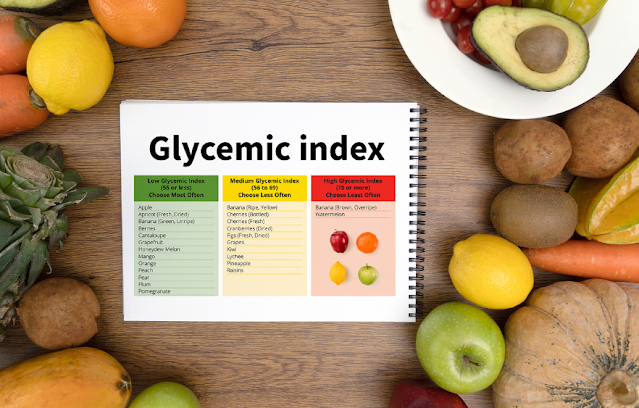 |
| Unraveling the Impact of Glycemic Index (GI) and Glycemic Load (GL) on Health |
The Glycemic Index (GI) is a measure of how carbohydrates in food affect blood glucose levels. It was first proposed by Prof. David Jenkins of the University of Toronto in 1981. Foods are categorized as low GI (less than 55), medium GI (56-69), and high GI (over 70), with glucose or white bread used as the reference (GI=100). Glycemic Load (GL) is calculated by multiplying the GI by the amount of carbohydrate consumed.
Importance of GI and GL in Diets:
Many nutritionists emphasize the negative effects of high GI diets and the benefits of low GI diets. While some argue that focusing solely on GI oversimplifies dietary considerations, there is growing evidence supporting the importance of GI and GL in overall health.
Link between High GI/GL Diets and Type 2 Diabetes:
Consuming diets high in GI can lead to rapid spikes in blood glucose levels, contributing to insulin resistance and the development of type 2 diabetes over time.
Association with Cardiovascular Disease and Mortality:
The PURE study, involving 137,851 participants from 20 countries, found that high GI diets were associated with major cardiovascular events, including deaths, across all ethnicities. This highlights the significant impact of GI on cardiovascular health beyond its association with diabetes.
Relevance to India and South Asia:
In regions like India and South Asia, where high GI carbohydrates like white rice and wheat are staples, efforts should be made to reduce GI and GL in diets to prevent and control diabetes and reduce premature cardiovascular disease.
Examples of Low and High GI Foods:
Low GI foods include brown rice, steel-cut oats, legumes, fruits like apples and guavas, vegetables like spinach and broccoli, and nuts and seeds. High GI foods include sugar, white rice, white bread, and sweetened drinks.
